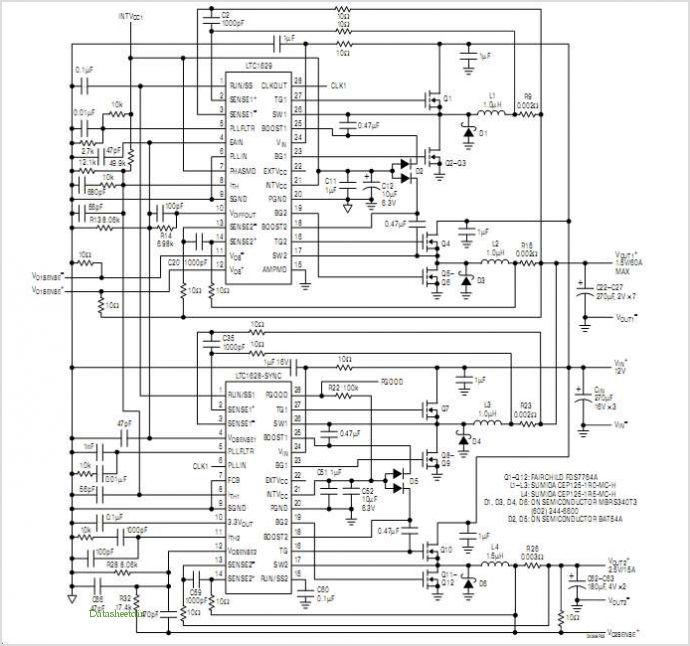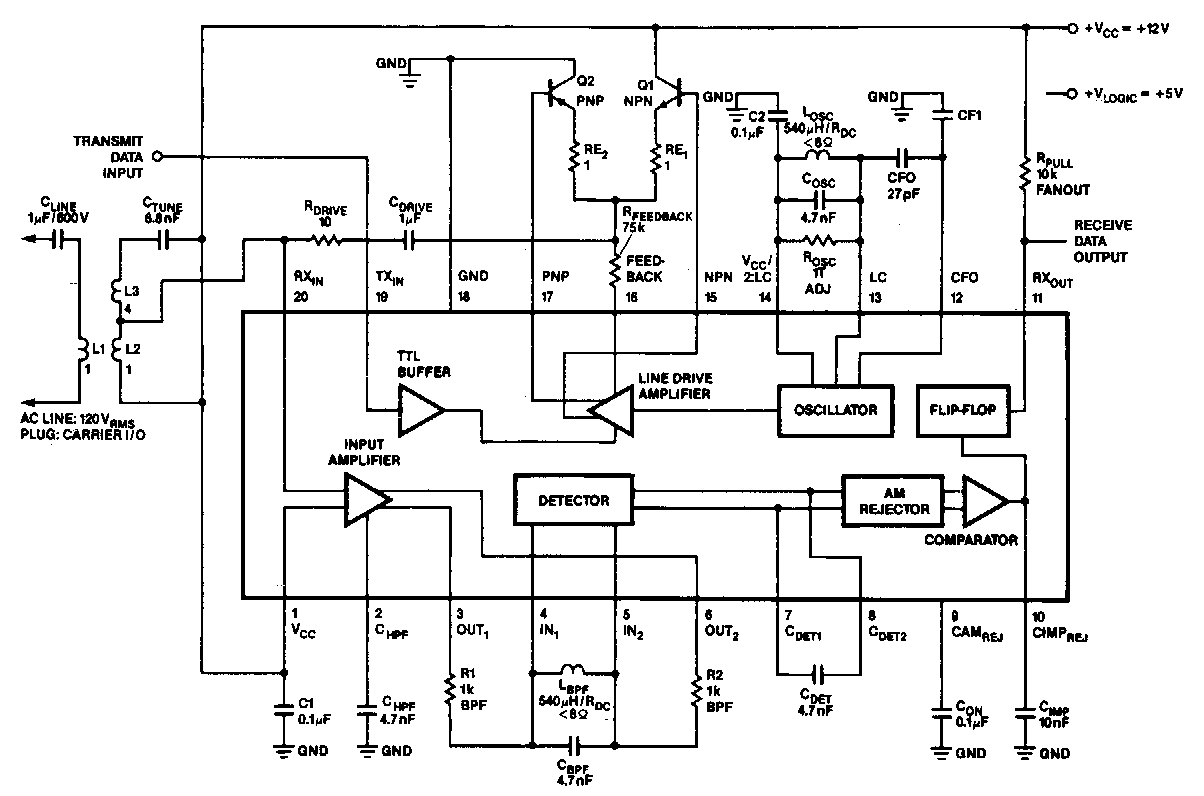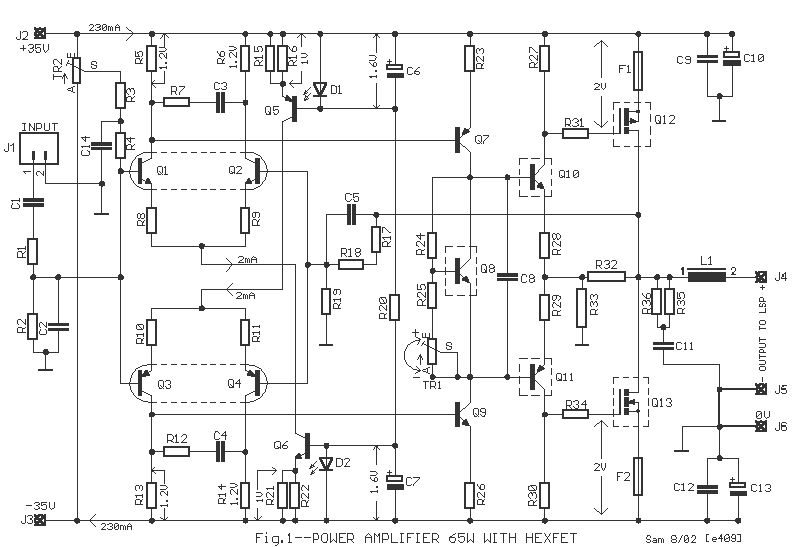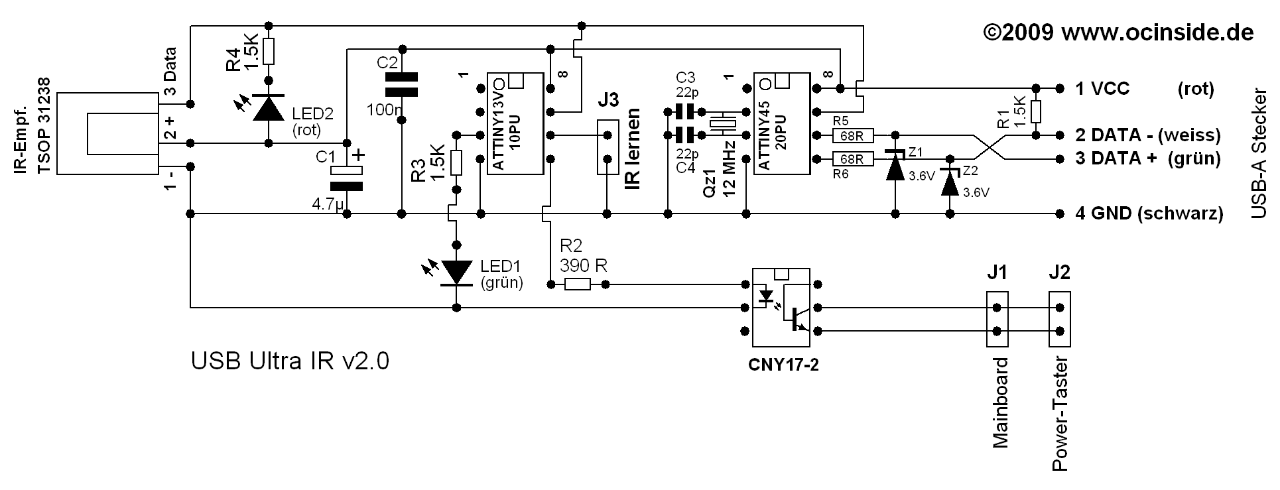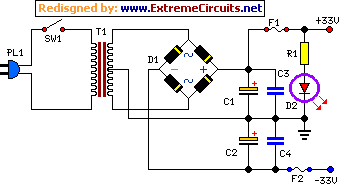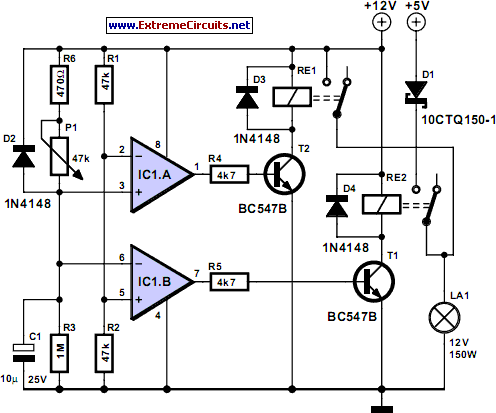
Complementary AC power switching
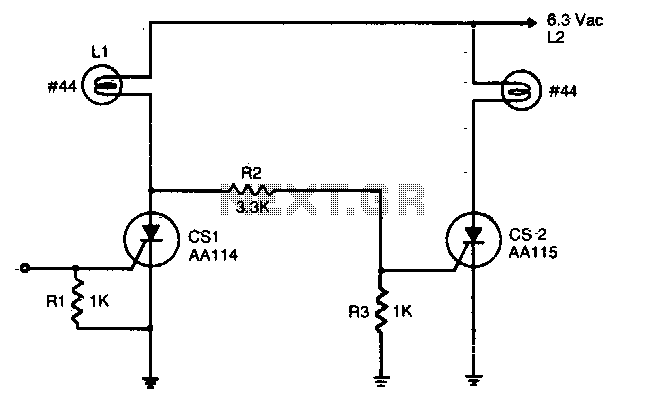
An input signal of less than 1 mA and 1V is required to switch on CS1. As long as this input signal is maintained, CS1 will conduct during each positive half-cycle of anode voltage, thereby energizing load L1 with half-wave rectified DC. L2 remains de-energized since the anode of CS1 will not go more positive than 1 volt, and the voltage divider R2 - R3 cannot provide enough voltage to trigger CS2. Upon removal of the input signal, CS1 will drop out. L1 will be de-energized, except for a small amount of AC current through R2 and R3. CS2 will be triggered on at the beginning of each positive half-cycle when CS1 anode voltage reaches 2 to 3 volts. CS2 will conduct for nearly the entire positive half-cycle, energizing L2. It should be noted that the 6-volt lamps used will operate at their rated brilliance because of the controlled switch half-wave rectifying action and will extend the operating lamp life by several orders of magnitude. Should full brilliance be desired, the anode supply voltage level should be raised to 9 volts AC.
The circuit operates by utilizing two controlled switches (CS1 and CS2) to manage the energization of two loads, L1 and L2, based on an input signal. CS1 is activated by a low-level input signal of less than 1 mA and 1V, which allows it to conduct during the positive half-cycles of the anode voltage. This conduction provides half-wave rectified DC to load L1, ensuring that it receives the necessary power for operation.
The voltage divider formed by resistors R2 and R3 plays a crucial role in determining the activation of CS2. Since the maximum voltage at the anode of CS1 does not exceed 1 volt, the voltage divider does not generate sufficient voltage to trigger CS2, thus keeping L2 de-energized while CS1 is active. Upon the removal of the input signal, CS1 ceases to conduct, resulting in L1 being de-energized, although a minor amount of AC current may still flow through R2 and R3.
CS2 is designed to activate at the onset of each positive half-cycle once the anode voltage of CS1 rises to between 2 to 3 volts. When this occurs, CS2 conducts for the majority of the positive half-cycle, which allows L2 to be energized. The design of the circuit ensures that the 6-volt lamps used in this application will achieve their rated brightness due to the half-wave rectification provided by the controlled switches, significantly enhancing their operational lifespan. For applications requiring full brightness, it is recommended to increase the anode supply voltage to 9 volts AC, which will provide sufficient energy for optimal lamp performance. This circuit exemplifies an efficient method of controlling load energization through precise voltage management and switch control.An input signal of less than 1 mA and 1V is required to switch on CS1. As long as this input -signal is maintained, CS1 will conduct during each positive half cycle of anode voltage, thereby energizing load LI with half-wave rectified dc. L2 remains de-energized, since the anode of CS1 will not go more positive than 1 volts, and voltage divider R2 - R3 cannot provide enough voltage to trigger CS2.
Upon removal of the input signal, CS1 will drop out. Ll will be de-energized, except for a small amount of ac current through R2 and R3 CS2 will be triggered on at the beginning of each positive half-cycle, when CSl anode voltage reaches 2 to 3 volts. CS2 will conduct for nearly the entire positive half-cycle energizing L2. It should be noted that the 6 volt lamps used will operate at Wthe rated brilliance because of the controlled switch half-wave rectifying action and will extend the operating lamp life by several orders of magnitude.
Should full brilliance be desired, the anode supply voltage level should be raised to 9 volts ac. 🔗 External reference
The circuit operates by utilizing two controlled switches (CS1 and CS2) to manage the energization of two loads, L1 and L2, based on an input signal. CS1 is activated by a low-level input signal of less than 1 mA and 1V, which allows it to conduct during the positive half-cycles of the anode voltage. This conduction provides half-wave rectified DC to load L1, ensuring that it receives the necessary power for operation.
The voltage divider formed by resistors R2 and R3 plays a crucial role in determining the activation of CS2. Since the maximum voltage at the anode of CS1 does not exceed 1 volt, the voltage divider does not generate sufficient voltage to trigger CS2, thus keeping L2 de-energized while CS1 is active. Upon the removal of the input signal, CS1 ceases to conduct, resulting in L1 being de-energized, although a minor amount of AC current may still flow through R2 and R3.
CS2 is designed to activate at the onset of each positive half-cycle once the anode voltage of CS1 rises to between 2 to 3 volts. When this occurs, CS2 conducts for the majority of the positive half-cycle, which allows L2 to be energized. The design of the circuit ensures that the 6-volt lamps used in this application will achieve their rated brightness due to the half-wave rectification provided by the controlled switches, significantly enhancing their operational lifespan. For applications requiring full brightness, it is recommended to increase the anode supply voltage to 9 volts AC, which will provide sufficient energy for optimal lamp performance. This circuit exemplifies an efficient method of controlling load energization through precise voltage management and switch control.An input signal of less than 1 mA and 1V is required to switch on CS1. As long as this input -signal is maintained, CS1 will conduct during each positive half cycle of anode voltage, thereby energizing load LI with half-wave rectified dc. L2 remains de-energized, since the anode of CS1 will not go more positive than 1 volts, and voltage divider R2 - R3 cannot provide enough voltage to trigger CS2.
Upon removal of the input signal, CS1 will drop out. Ll will be de-energized, except for a small amount of ac current through R2 and R3 CS2 will be triggered on at the beginning of each positive half-cycle, when CSl anode voltage reaches 2 to 3 volts. CS2 will conduct for nearly the entire positive half-cycle energizing L2. It should be noted that the 6 volt lamps used will operate at Wthe rated brilliance because of the controlled switch half-wave rectifying action and will extend the operating lamp life by several orders of magnitude.
Should full brilliance be desired, the anode supply voltage level should be raised to 9 volts ac. 🔗 External reference
Warning: include(partials/cookie-banner.php): Failed to open stream: Permission denied in /var/www/html/nextgr/view-circuit.php on line 713
Warning: include(): Failed opening 'partials/cookie-banner.php' for inclusion (include_path='.:/usr/share/php') in /var/www/html/nextgr/view-circuit.php on line 713
